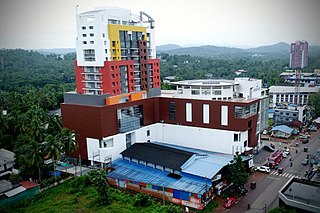
Malappuram, is one of the 14 districts in the Indian state of Kerala, with a coastline of 70 km (43 mi). The most populous district of Kerala, Malappuram is home to around 13% of the total population of the state. The district was formed on 16 June 1969, spanning an area of about 3,554 km2 (1,372 sq mi). It is the third-largest district of Kerala by area. It is bounded by Western Ghats and the Arabian Sea on either side. The district is divided into seven Taluks: Eranad, Kondotty, Nilambur, Perinthalmanna, Ponnani, Tirur, and Tirurangadi.

Malabar Muslims or Muslim Mappilas are members of the Muslim community found predominantly in Kerala and the Lakshadweep islands in Southern India. The term Mappila (Ma-Pilla) is used to describe Malabar Muslims in Northern Kerala. Muslims share the common language of Malayalam with the other religious communities of Kerala.

Ponnani is a municipality in Ponnani Taluk, Malappuram District, in the state of Kerala, India. It serves as the administrative center of the Taluk and Block Panchayat of the same name. It is situated at the estuary of Bharatappuzha, on its southern bank, and is bounded by the Arabian Sea on the west and a series of brackish lagoons in the south.
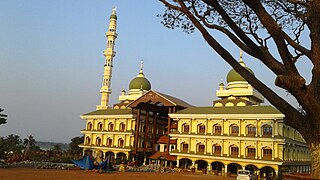
Malik Deenar Masjid is one of the oldest mosque in India, situated in Thalangara in Kasaragod town of Kerala state, India.
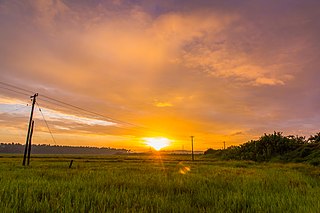
Thrissur, anglicised as Trichur, is one of the 14 districts in the Indian state of Kerala. It is situated in the central region of the state. Spanning an area of about 3,032 km2 (1,171 sq mi), the district is home to over 9% of Kerala's population.
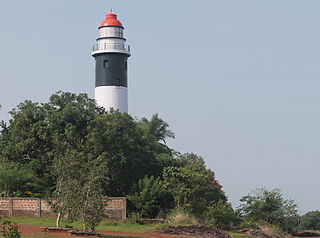
Koyilandy is a major town municipality and a taluk in Kozhikode district, Kerala on the Malabar Coast. The historical town is located right in the middle of the coast of Kozhikode district, between Kozhikode and Kannur, on National Highway 66.
Kuttichira or Thekkepuram is a quarter located inside the city of Kozhikode in the Indian state of Kerala. Its approximate boundaries are the Arabian Sea on the West, the Kallai river on the South, Vellayil on the North, and Kozhikode town on the East.

Islam arrived in Kerala, the Malayalam-speaking region in the south-western tip of India, through Middle Eastern merchants. The Indian coast has an ancient relation with West Asia and the Middle East, even during the pre-Islamic period.

The Cheraman Juma Mosque is a popular prayer centre in Kodungallur in Thrissur district. According to hagiographical legends, it is claimed that the mosque was built in 629 CE by Malik Bin Dinar.

Thazhathangady Juma Masjid is a mosque situated in Thazhathangady, one of the Heritage Zones of Kerala, India, near the town of Kottayam, and on the banks of the Meenachil river. It is one of the oldest mosques in India, dating back more than 1000 years. This mosque is known for its beautiful architecture as well as its craftsmanship, including intricate wooden carvings, a secret passageway, and a water tank carved out of a single block of stone. Its southern half was demolished and extended with iron pillars, aluminum sheets and minars in 2012.
Tuhfat al-Mujahidin fi ba‘d Akhbar al-Burtughaliyin is a historical work by Zainuddin Makhdoom II on the struggle between the Mappila Muslims of Malabar and South Canara and Portuguese colonial forces in the 16th century. It is the first historical work of Kerala to be authored by a Keralite. The book describes the resistance put up by the navy of Kunjali Marakkar alongside the Zamorin of Calicut from 1498 to 1583 against Portuguese attempts to colonize the Malabar coast. Along with chronological events of the era, the book also provides an analysis of the events, as well as the lifestyle, customs and family structure of the people of the time.
Sheikh Zainuddin Makhdoom bin Sheikh Al Qazi Ali, was an Islamic scholar and grandfather. He is the builder of Ponnani Juma Masjid.

Jamiul Futuh Jami ul Futuh, India's largest Masjid, is situated within the breathtaking Markaz Knowledge City in Kerala, South India. It was founded by Shaykh Abu Bakr Ahmed, the esteemed Grand Mufti of India, and warmly welcomed its first visitors in September 2023. Jami ul Futuh is a magnificent masterpiece that stands as a tribute to India's rich culture and heritage, showcasing the captivating Indo-Saracen architectural style. Jamiul Futuh provides a spiritual haven where Muslims come together to perform their obligatory and voluntary prayers, fostering a sense of unity and devotion. The Jami'ul Futuh is also a center of education offering a variety of Islamic courses and classes to enhance the knowledge and understanding of Islam among both children and adults.
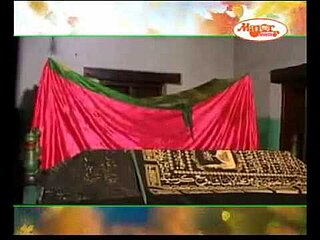
Valiyankode Umer Qazi was a Muslim scholar, freedom fighter and poet. He was active in the Civil disobedience movement and refused to pay tax to the government in British India.
Kunhippalli is a place in Chombal near Mahe district, in the Union territory of Puducherry in India.
Sheikh Ahmad Zainuddin Makhdoom bin Sheikh Muhammad Al Gazzali, grandson of Sheikh Zainuddin Makhdoom I, was the writer, orator, historian, jurisprudent and spiritual leader and widely known as Zainuddin Makhdoom Second or Zaniudeen Makhdoom Al Sageer whose family originated from Yemen. He inherited the legacy of his grandfather and was installed as the Chief Qadi (judge) in the locality of Ponnani, Kerala, India, as well as appointed as the Chief Müderris in the historic Ponnani Dars at Ponnani Jum'ah Masjid, that built by Zainuddin Makhdoom I.
Madayi Mosque is mosque at Pazhayangadi in Kannur district, northern Kerala, India. It is one of the oldest mosques in Kerala, with local legends dating back to the 7th century AD. It is believed to have been established by Malik ibn Dinar and contains a block of white marble said to have been brought from Mecca by ibn Dinar. It is one of the several mosques around Pazhayangadi/Payangadi. It is situated on the banks of Kuppam River, which joins Valapattanam River at its estuary.

South Malabar refers to a geographical area of the southwestern coast of India covering some parts of the present-day Kerala state. South Malabar covers the regions included in present-day Kozhikode and Thamarassery taluk of Kozhikode district, Wayanad district excluding Mananthavady taluk, the whole area of Malappuram district, Chavakkad taluk of Thrissur district, and Palakkad district, excluding parts of Chittur taluk. The Fort Kochi region of Kochi city also historically belongs to South Malabar. The term South Malabar refers to the region of the erstwhile Malabar District south to the river Korapuzha, and bears a high cultural similarity to both the Cochin and the North Malabar regions.
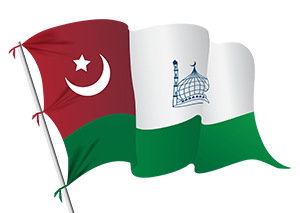
Samastha Kerala Jem-iyyathul Ulama of EK Sunnis also known as Samastha and EK Samastha is a Sunni-Shafi'i Muslim scholarly body in Kerala. The body administers Shafi'ite mosques, institutes of higher religious learning and madrasas in India. The Samasta Kerala Jamiyatul Ulama, popularly known as Samastha, is the Sunni scholarly organization with the highest support among Kerala Muslims. The formation of the Samasta was a response of these traditional ulama to the conditions of the post-1921 era, in which Kerala Muslim society in general witnessed a radical shift from the ladder of individual leadership to the ladder of organizations.

Misri Masjid also known as Egyptian mosque is a 16th-century mosque located in Ponnani of Malappuram district, southern India. The masjid was initially built for the Zainuddin Makhdoom's army, come from Egypt to help the Zamorin king's army in the battle against the Portuguese. The mosque is one of the important cultural, historical and architectural monuments of Kerala. The Misri Masjid is also a remnant of the medieval trade relationship between Egypt and Malabar coast.















